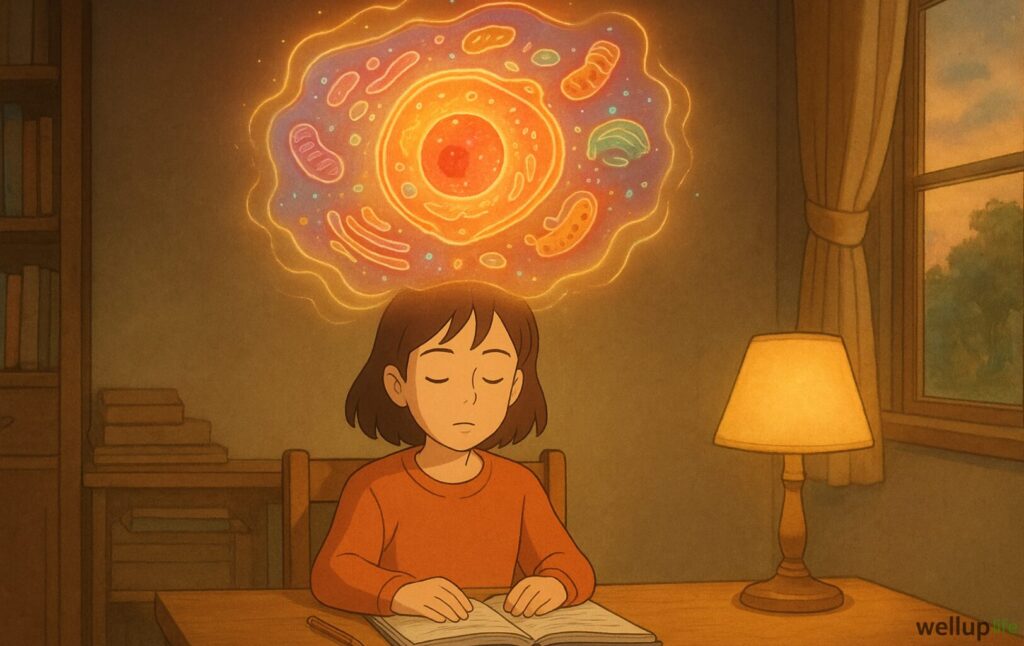In today’s fast-paced world, even kids are not immune to stress and distractions. Between school, homework, screen time, and extracurricular activities, many children find it hard to slow down and simply be present. This is where mindfulness activities for kids can make a huge difference.
Mindfulness, at its core, is about paying gentle attention to the present moment — noticing thoughts, feelings, and sensations without judgment. For children, practicing mindfulness can be both fun and transformative. It helps them develop calmness, focus, emotional regulation, and resilience at an early age. Research suggests that simple mindfulness exercises for kids can improve concentration in school, reduce anxiety, and even support better sleep [1]Mindfulness for children: Benefits & techniques.
The best part? Mindfulness for kids doesn’t have to be serious or complicated. With playful games, creative exercises, and short daily practices, parents and teachers can turn mindfulness into an enjoyable habit. In this guide, we’ll explore fun mindfulness activities for children that not only bring calmness but also nurture emotional strength and a sense of joy.
What is Mindfulness for Kids?
Mindfulness might sound like a big word, but for kids, it’s simply the practice of paying attention to the here and now. It means noticing their breath, their feelings, or even the taste of food without getting distracted by worries about the past or future.
In simple terms, mindfulness helps children slow down and connect with what they’re experiencing in the present moment.
For kids, this often looks like mindfulness techniques for children, such as deep breathing, listening carefully to sounds around them, or focusing on one activity at a time. Unlike adults, children are naturally curious and open — which makes them quick learners when it comes to mindfulness.
Why is this important? Because childhood is the foundation of emotional well-being. By introducing mindfulness for kids early, parents and teachers can help children:
- Build stronger attention and focus.
- Understand and regulate their emotions.
- Respond calmly instead of reacting quickly.
- Develop empathy and kindness toward themselves and others.
In short, mindfulness exercises for kids aren’t about forcing silence or stillness; they’re about creating small, enjoyable moments of awareness. Whether it’s taking a mindful breath before class starts or noticing the colors while drawing, these simple practices can nurture calmness, confidence, and joy from an early age.
Benefits of Mindfulness for Kids
Childhood is full of curiosity, learning, and growth — but it also comes with its share of challenges. Kids face pressure from school, competition in studies or sports, social dynamics with friends, and even digital overload. Practicing mindfulness activities for kids can be a powerful way to help them manage these challenges while building lifelong emotional skills.
Here are some of the most important benefits:
1. Improves Focus and Concentration
Mindfulness teaches children how to pay attention to one thing at a time. Through simple mindfulness exercises for kids, such as mindful breathing or mindful listening, children learn to strengthen their attention span. This skill translates directly into better performance in school and daily tasks.
2. Reduces Stress and Anxiety
Even kids can feel stressed — from exams, busy schedules, or social pressure. Mindfulness techniques for children, like the “five senses game” or a short breathing exercise, can lower anxiety and help them feel calmer in overwhelming moments [2]Mindfulness and stress reduction in children.
3. Encourages Emotional Regulation
Children often act on emotions instantly, whether it’s frustration, sadness, or excitement. Practicing mindfulness helps kids pause, recognize what they’re feeling, and choose a calmer response. This emotional regulation is especially helpful both at home and in classrooms.
4. Builds Resilience and Self-Awareness
By practicing daily mindfulness activities for children, kids learn how to notice their thoughts and feelings without judgment. This builds resilience and self-awareness, making it easier for them to bounce back from setbacks.
5. Promotes Better Sleep and Relaxation
Calmness before bedtime is a struggle for many children. Mindful breathing, body scan exercises, or even a simple mindfulness game for kids before bed can quiet the mind, leading to better sleep and deeper rest.
6. Encourages Kindness and Empathy
Mindfulness isn’t just about self-awareness; it also cultivates compassion. Activities like gratitude jars or mindful storytelling can help kids appreciate what they have and understand others’ feelings, nurturing empathy and kindness.
In short, mindfulness practices for kids go beyond just calmness. They build focus, emotional strength, and kindness — qualities that support a child’s growth not just in school, but in life.
How to Introduce Mindfulness to Kids
Teaching kids mindfulness doesn’t mean asking them to sit silently for long meditations. In fact, children learn best when mindfulness feels like play — short, engaging, and creative. The goal is to gently introduce mindfulness practices for children in ways that match their natural curiosity and energy levels.
Here are some simple strategies for parents and teachers that help them to Introduce Mindfulness to Kids:
1. Keep It Short and Playful
Children’s attention spans are naturally shorter than adults’. Start with simple mindfulness exercises for kids that last only 2–5 minutes. For example, ask them to take three deep breaths before class or notice the sounds they hear during a walk.
2. Use Stories and Imagination
Kids love stories and role-play. You can introduce mindfulness for kids by using imagination, such as pretending they’re inflating a balloon with their breath or listening carefully to the “magic sounds” around them. This keeps the practice fun and engaging.
3. Practice Together
Children learn by observing adults. When parents or teachers model mindfulness techniques for children, kids feel encouraged to follow along. For instance, you could start your day with a short mindful breathing exercise as a family or end a class with a one-minute silent reflection.
4. Connect to Everyday Activities
Mindfulness doesn’t always need a quiet room. Encourage kids to practice during daily routines: noticing the taste and texture of food while eating, observing the colors while drawing, or feeling each step while walking. These daily mindfulness practices for children make it a natural part of life.
5. Encourage Consistency, Not Perfection
It’s important not to force kids into mindfulness. Instead, gently invite them to try activities and praise their efforts. Consistency matters more than perfection. Even short moments of awareness practiced regularly can lead to lasting benefits.
6. Create a Calm Environment
Having a “mindfulness corner” at home or in the classroom can be very helpful. A small space with soft cushions, a glitter jar, or calming music can make children look forward to their mindfulness activities at home or school.
By keeping mindfulness playful, consistent, and integrated into daily life, kids are more likely to embrace it. The key is to make these moments enjoyable — something they look forward to, rather than a task they must complete.
10 Fun Mindfulness Activities for Kids
Now that we know the benefits and simple ways to introduce mindfulness, let’s explore some fun and practical mindfulness activities for kids. These exercises are designed to be playful, easy to follow, and suitable for both home and classroom settings. Each one can be adapted depending on the child’s age and attention span.
1. Mindful Breathing with a Balloon
Breathing is the foundation of mindfulness, and kids love it when it’s connected to their imagination. This exercise uses the idea of a balloon to make mindful breathing fun and engaging.
How to Do It:
- Ask your child to sit comfortably or lie down.
- Tell them to place their hands on their belly and imagine a balloon inside.
- As they breathe in deeply through the nose, the “balloon” inflates (their belly rises).
- As they breathe out slowly through the mouth, the “balloon” deflates (their belly falls).
- Repeat this for 1–2 minutes, encouraging slow, steady breaths.
Why It Works:
This activity helps children notice their breath, calm their bodies, and release tension. It’s especially helpful before bedtime, before exams, or whenever they feel anxious. Over time, this simple mindfulness exercise for kids teaches them how to use breathing as a tool to self-soothe.
2. Mindful Coloring
Coloring is naturally calming for children, and when practiced mindfully, it becomes a simple yet powerful way to focus and relax. Unlike regular coloring, mindful coloring encourages kids to slow down and notice every detail — the colors, the strokes, and the patterns.
How to Do It:
- Give your child a coloring sheet, a blank paper, or even a mandala design.
- Ask them to choose colors thoughtfully instead of rushing.
- Encourage them to notice how the crayon, pencil, or marker feels in their hand.
- While coloring, ask them to pay attention to the movement of their hand, the texture of the paper, and how the colors blend together.
- If their mind wanders, gently guide them back to the act of coloring.
Why It Works:
This activity helps kids slow down and focus on the present moment. It improves concentration, creativity, and patience while providing a healthy outlet for stress. Many parents and teachers use mindful coloring for kids during quiet time, before bed, or even in classrooms to help students reset their energy.
3. Gratitude Jar
Practicing gratitude is one of the simplest forms of mindfulness, and kids can learn it easily with a fun and creative activity like the Gratitude Jar. It helps children focus on the positive things in their lives, which naturally boosts happiness and calmness.
How to Do It:
- Take an empty jar or box and decorate it together with your child.
- Keep small slips of paper and colorful pens nearby.
- Each day, ask your child to write (or draw) one thing they feel thankful for — it could be a toy, a friend, a sunny day, or even their favorite food.
- Drop the note into the jar.
- At the end of the week or month, open the jar and read them together as a family or class.
Why It Works:
The gratitude jar builds a habit of noticing the good things around them. It teaches kids appreciation, positivity, and empathy. Over time, this mindfulness practice reduces stress, strengthens family bonds, and helps children develop a more optimistic mindset.
4. Mindful Listening Game
Kids are often surrounded by noise, but they rarely stop to truly listen. This activity turns listening into a fun game while teaching children how to pay close attention to sounds in their environment.
How to Do It:
- Ask your child to sit comfortably and close their eyes.
- Set a timer for 1–2 minutes.
- During this time, encourage them to notice every sound around them — birds chirping, a ticking clock, footsteps, distant voices, or even their own breathing.
- After the timer ends, ask them to share what they heard. You can make it playful by asking, “Who heard the softest sound?” or “Who noticed the most different sounds?”
Why It Works:
The mindful listening game sharpens children’s awareness, focus, and patience. It also helps them appreciate the present moment by tuning into details they usually overlook. Teachers often use this in classrooms as a calming exercise before lessons, and parents can try it at home during quiet time.
5. Body Scan for Kids
The body scan is a gentle way to help children connect with how their body feels from head to toe. It’s especially useful before bedtime or after a busy day, when kids need to relax and release built-up energy.
How to Do It:
- Ask your child to lie down comfortably on their back, with eyes closed if they’re okay with it.
- Guide them to take a few deep breaths to settle in.
- Starting from the head, slowly bring their attention to each part of the body: head, shoulders, arms, chest, stomach, legs, and feet.
- At each step, invite them to notice sensations — warmth, tension, tingling, or relaxation.
- End the scan by asking them to imagine their whole body feeling calm, heavy, and relaxed.
Why It Works:
The body scan for kids helps children become aware of their bodies and feelings in a safe, non-judgmental way. It reduces restlessness, encourages better sleep, and teaches them how to notice stress signals early. Many parents use this as part of a nightly routine to calm children before sleep.
6. Mindful Walking
Walking is something kids do every day, but turning it into a mindful activity can transform it into a calming practice. Mindful walking helps children slow down, connect with their bodies, and notice the world around them.
How to Do It:
- Choose a safe space — a garden, park, or even indoors.
- Ask your child to walk slowly, paying attention to each step.
- Encourage them to notice how their feet touch the ground, how their legs move, and how their body feels as they walk.
- Invite them to observe their surroundings — the colors, sounds, smells, or even the feeling of air on their skin.
- Walk together for 2–5 minutes in silence, then ask them how they felt.
Why It Works:
Mindful walking for kids builds awareness of the body and environment. It’s a simple way to release restlessness, improve focus, and promote calmness. Teachers can use it as a quick classroom break, while parents can practice it during evening walks.
7. Mindful Eating with Raisins/Chocolates
Eating is something children enjoy, which makes it a great way to introduce mindfulness. Mindful eating turns snack time into an opportunity to slow down and notice the experience with all five senses.
How to Do It:
- Give your child a small piece of food, such as a raisin, a slice of fruit, or a bar of chocolate.
- Ask them to look at it closely — its shape, color, and texture.
- Invite them to smell it and notice the aroma.
- Place it on their tongue, but wait a few seconds before chewing. Encourage them to notice how it feels.
- Ask them to chew slowly, paying attention to the taste and texture, and only swallow when ready.
Why It Works:
Mindful eating for kids helps them appreciate food and develop healthier eating habits. It also teaches patience, focus, and awareness of the senses. Parents often use this practice to make meals calmer, while teachers may use it as a fun classroom activity.
8. Five Senses Game
The five senses game is a fun and interactive way to bring kids into the present moment. By focusing on what they can see, hear, feel, smell, and taste, children learn to ground themselves and calm racing thoughts.
How to Do It:
- Ask your child to pause and take a deep breath.
- Guide them to notice:
- 5 things they can see (colors, objects, shapes around them)
- 4 things they can feel (their clothes, chair, floor, or air on their skin)
- 3 things they can hear (birds, voices, fans, or footsteps)
- 2 things they can smell (flowers, food, crayons, or even fresh air)
- 1 thing they can taste (gum, a snack, or just the natural taste in their mouth)
- Let them share what they noticed afterward — it can be turned into a fun discussion.
Why It Works:
The five-senses mindfulness activity for kids is a quick way to reduce anxiety and bring attention back to the present. It’s especially helpful when kids feel overwhelmed, nervous before exams, or restless in class.
9. Mindful Storytelling
Stories naturally capture a child’s attention, which makes them a wonderful way to practice mindfulness. Mindful storytelling encourages kids to notice emotions, details, and lessons in a story rather than just rushing through it.
How to Do It:
- Choose a short story, picture book, or even make up a simple tale.
- Read slowly, pausing at moments to ask questions like:
- “How do you think the character feels right now?”
- “What colors or details do you notice in this picture?”
- “If you were in this story, what would you do?”
- Encourage kids to imagine themselves in the story and describe what they see, hear, or feel.
- End by asking them to share what part of the story made them feel calm, happy, or thoughtful.
Why It Works:
Mindful storytelling for kids builds emotional awareness, empathy, and focus. It also strengthens listening skills and helps children connect with feelings in a safe, creative way. Parents can use it during bedtime routines, and teachers can integrate it into reading sessions to spark meaningful discussions.
10. Mindfulness Jar (Glitter Jar)
The mindfulness jar, also called the glitter jar or calm-down jar, is one of the most engaging ways to teach mindfulness to kids. It gives children a visual representation of how thoughts and feelings can be busy and unsettled — and how, with time and stillness, they can calm down.
How to Make a Glitter Jar:
You don’t need fancy supplies — just a few simple items you probably already have at home.
Materials Required:
- 1 clear jar or plastic bottle with a tight lid
- Warm water
- Glitter (fine glitter works best)
- Glitter glue or clear glue (to make the glitter settle more slowly)
- A few drops of food coloring (optional)
Steps To Make a Glitter Jar:
- Fill the jar about three-fourths full with warm water.
- Add 1–2 tablespoons of glitter glue or clear glue. This helps the glitter float longer before settling.
- Sprinkle in a spoonful of glitter. You can mix different colors for a magical effect.
- (Optional) Add a drop or two of food coloring for extra brightness.
- Seal the lid tightly — you can even glue it shut to avoid spills.
- Shake the jar and watch the glitter swirl around!
How to Use It with Kids:
- Ask your child to shake the jar when they feel upset, restless, or worried.
- Invite them to watch the glitter slowly fall to the bottom while taking deep breaths.
- Explain that the glitter is like their busy thoughts — at first, everything feels scattered. But with stillness and patience, the “mind” clears, just like the glitter settles.
Why It Works:
The glitter jar mindfulness activity for kids is a calming, hands-on way to show how emotions work. It teaches patience, focus, and self-regulation. Parents can keep one at home for emotional moments, and teachers can place one in a classroom “calm corner” for students to use when they need a break.
A glitter jar isn’t just pretty to look at — it’s a simple but powerful mindfulness tool that helps children understand that it’s okay to have busy thoughts and feelings, and that with time, calmness always returns.
Short Mindfulness Practices for Kids at Home or in the Classroom
Mindfulness doesn’t always need long sessions or special tools. Even short mindfulness practices can make a big difference for children, whether they are at home with parents or in a busy classroom with teachers. These quick exercises help kids reset their minds, manage emotions, and focus better on the task at hand.
Here are a few simple practices that work well in everyday settings:
- One-Minute Breathing Break – Ask kids to close their eyes, place one hand on their belly, and take slow, deep breaths for just one minute. This quick reset is great before homework or after recess.
- Mindful Listening – Ring a small bell (or even use a phone chime) and let children listen closely until they can no longer hear the sound. It sharpens focus and brings calm.
- Mindful Stretching – Encourage kids to do slow stretches, paying attention to how their body feels. Perfect for re-energizing in between lessons.
- Gratitude Pause – Invite children to think of one thing they feel thankful for and say it out loud or write it down. It builds positivity and emotional resilience.
- Silent Observation – Give them 30 seconds to look out the window or notice something in the classroom. Observing quietly helps children practice awareness without judgment.
Why It Works:
These short mindfulness activities for kids fit naturally into daily routines. Parents can use them before bedtime or meals, while teachers can integrate them during transitions in class. They’re easy, quick, and effective for reducing stress and improving concentration.
Mindfulness Activities for Special Needs Children
Children with special needs — such as Autism, ADHD, or sensory processing challenges — often experience overwhelming emotions, difficulty focusing, or heightened stress levels. Mindfulness can be a supportive tool to help them feel calmer, more grounded, and connected to the present moment. The key is to adapt practices to their unique needs so the activities feel safe, engaging, and enjoyable.
Gentle Mindfulness Activities That Work Well:
- Mindful Breathing with Visuals
Instead of simply asking a child to “breathe deeply,” use visual prompts. For example, ask them to:- Pretend they are blowing up a balloon (inhale through the nose, exhale through the mouth).
- Smell a flower (inhale) and blow out a candle (exhale).
These cues make breathing exercises more relatable and easier to follow.
- Sensory Mindfulness
Children with special needs often respond strongly to sensory experiences. Simple activities like touching different textures (soft cloth, smooth stone, warm cup of tea) or listening to calming sounds (rain, birds, gentle music) help anchor their attention. - Mindful Movement
Gentle yoga poses, stretching, or rocking motions can help children release built-up energy while staying present. Movements should be simple and adaptable to their physical comfort. - Mindfulness Jar (Visual Calming Tool)
A glitter jar works wonderfully for kids with autism or ADHD. Watching the glitter slowly settle can provide a visual and soothing way to calm down when emotions are running high. - Guided Storytelling or Visualization
Stories where a child imagines being in a safe, calm place (like sitting on a cloud or walking through a garden) allow them to relax and practice mindfulness through imagination.
Why It Works:
Mindfulness activities for special needs children support:
- Emotional regulation – helping manage anxiety, meltdowns, or restlessness.
- Focus and attention – short, structured practices improve concentration.
- Self-awareness – children learn to notice how they feel in their body and mind.
- Calmness – provides coping strategies during overwhelming moments.
Parents, caregivers, and teachers can integrate these short practices into daily routines. The activities work best when kept short, visual, and consistent.
With gentle adaptation, mindfulness becomes a supportive tool for special needs kids to feel calmer, safer, and more in control of their emotions.
Tips for Parents & Teachers to Encourage Mindfulness
While mindfulness can be fun and rewarding, children may not always understand its importance at first. Parents and teachers play a crucial role in creating an environment where mindfulness becomes a natural habit. Here are some practical tips to make mindfulness engaging and consistent for kids:
1. Lead by Example
Children learn best by watching adults. When parents or teachers practice mindful breathing, speak calmly, or take a mindful pause before reacting, kids naturally pick up the behavior.
2. Start Small & Keep It Simple
Begin with short practices — even 1–2 minutes of mindful breathing or listening. Gradually increase the time as children get comfortable. Long or complicated exercises may feel overwhelming.
3. Make It Fun & Interactive
Mindfulness for kids should feel like play. Use games (like the Five Senses Game), stories, coloring, or glitter jars to make activities enjoyable rather than strict “lessons.”
4. Create a Routine
Consistency helps children. Parents can practice mindfulness before bedtime, while teachers can integrate a short mindful moment after recess or before tests. Daily repetition builds a habit.
5. Use Visuals & Tools
Children often respond better to visual cues — glitter jars, breathing balls, or even apps with calming sounds. These make mindfulness more engaging and concrete.
6. Encourage Reflection
After an activity, ask kids how they felt. Did they feel calmer? More focused? Reflection helps them recognize the benefits of mindfulness in their own lives.
7. Be Patient & Supportive
Mindfulness is a skill — and like any skill, it takes practice. Avoid forcing it or expecting instant results. Encourage kids gently, celebrate small successes, and keep the tone light.
With encouragement and creativity, parents and teachers can turn mindfulness into a natural, daily habit for kids — one that supports their emotional well-being, focus, and resilience.
FAQs on Mindfulness Activities for Kids
What is mindfulness for kids?
Mindfulness for kids is the practice of helping children focus on the present moment through simple activities like breathing exercises, coloring, or storytelling. It teaches calmness, focus, and emotional awareness in a fun and age-appropriate way.
How do you explain mindfulness to a child?
You can explain mindfulness as “paying attention to what’s happening right now.” For example, noticing their breathing, the sound of birds, or the taste of food. Using games like the Five Senses Game makes it easier for kids to understand.
At what age can kids start mindfulness activities?
Children as young as 3–4 years old can start with very short and playful mindfulness practices, such as mindful breathing or listening games. Older children can explore more structured activities like journaling, yoga, or mindful storytelling.
What are the benefits of mindfulness for kids?
Mindfulness helps kids improve focus, manage stress, regulate emotions, and build self-awareness. It also encourages empathy and resilience, which are valuable life skills for school and relationships.
Can mindfulness help kids with anxiety or ADHD?
Yes, mindfulness has been shown to reduce anxiety and improve attention in children, including those with ADHD or special needs. Short, visual, and sensory-based activities — like glitter jars or breathing games — are especially helpful.
How can teachers use mindfulness in the classroom?
Teachers can add short mindfulness breaks during transitions, before tests, or after recess. Activities like mindful breathing, stretching, or silent listening can help students refocus and create a calmer classroom environment.
How long should a mindfulness activity last for kids?
For younger children, 1–5 minutes is often enough. As kids grow older and more comfortable with the practice, sessions can gradually extend to 10–15 minutes. The key is to keep it consistent and engaging.
Conclusion
Mindfulness is more than just a relaxation tool — it’s a life skill. By introducing mindfulness activities for kids early, we give them a healthy way to handle stress, improve focus, and build emotional strength that lasts into adulthood. Whether it’s mindful breathing, coloring, storytelling, or using a glitter jar, these practices teach children that calmness and clarity are always within reach.
Key Takeaways:
- Mindfulness can be simple, fun, and age-appropriate — from quick breathing breaks to creative games.
- Parents and teachers play a crucial role by modeling mindfulness and making it a regular part of daily routines.
- Special needs children can especially benefit when practices are adapted to their unique learning styles and sensory preferences.
- Short, consistent practices often work better than long sessions, helping kids stay engaged without feeling pressured.
The earlier children learn these skills, the stronger their foundation for emotional balance, resilience, and well-being will be. By making mindfulness playful and practical, we prepare kids not just for calmer moments today, but for a healthier, more mindful future.
Read Next: 7 Mindfulness Exercises for Students to Improve Focus & Learning













